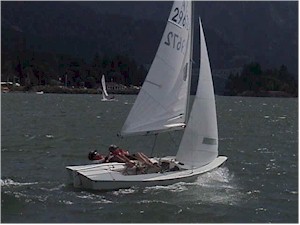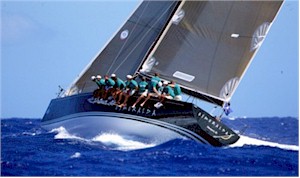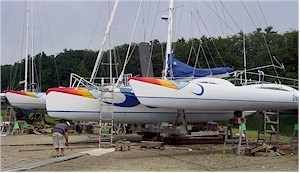| When wind blows on a plant or tree, it wants to tip it over, but its roots hold it upright. |  |
| Similarly, when the wind blows on a sailboat, it wants to tip it over. | .jpg) |
| In order to keep a boat upright, there are three things to consider: | |
| In small dinghies, you keep the boat upright by shifting the crew to the windward side to balance the boat and counteract the force of the wind trying to blow the boat over. |  |
| In big boats, there is a big heavy lead keel that hangs underneath the boat and acts as a counterweight to keep the boat upright. |  |
| Even on a boat with a big keel, the crew may try to help with their weight. |  |
| In a trimaran there is no keel. Instead, there are pontoons (also called floats or amas) on each side. The pontoons, like “training wheels” on a tricycle (a common trimaran joke!), keep the boat upright. |  |
| When the wind blows against the sails of a trimaran, it tries to push the boat over, which tries to push the leeward float underwater. But that float has a lot of buoyancy, and resists, and keeps floating, thus keeping the boat upright. |  |
Keeping Great American III Upright
